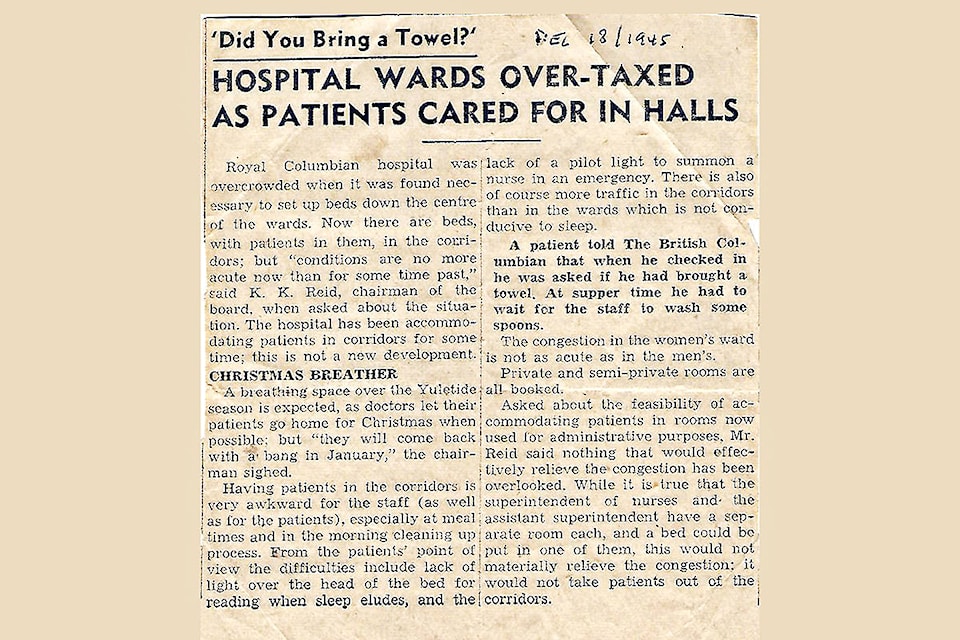Dear Editor,
I found this newspaper clipping while going through my late Mother in Laws box of memorabilia. She was a resident nurse at the Royal Columbian Hospital in 1945. It is self explanatory in that sadly the same issue of bed shortages still exist almost 75 years later.
Gerry Larson, Murrayville
‘Did you bring a towel’
Hospital wards over-taxed as patients cared for in halls (Dec. 18, 1945)
Royal Columbian hospital was overcrowded when it was found necessary to set up beds down the centre of the wards. Now there are beds with patients in them, in the corridors; but “conditions are no more acute now than for some time past,” said K.K. Reid, chairman of the board, when asked about the situation. The hospital has been accommodating patients in corridors for some time; this is not a new development.
Christmas breather
A breathing space over the Yuletide season is expected. as doctors let their patients go home for Christmas when possible but “they will come back with a bang in January,” the chairman sighed.
Having patients in the corridors is very awkward for the staff (as well as for the patients), especially at meal times and in the morning cleaning up process. From the patients’ point of view the difficulties include lack of light over the head of the bed for reading when sleep eludes, and the lack of a pilot light to summon a nurse in an emergency. There is also of course more traffic in the corridors than in the wards which is not conducive to sleep.
A patient told The British Columbian that when he checked in he was asked if he had brought a towel. At supper time he had to wait for staff to wash some spoons.
The congestion in the women’s ward is not as acute as in the men’s.
Private and semi-private rooms are all booked.
Asked about the feasibility of accommodating patients in rooms now used for administrative purposes, Mr. Reid said nothing that would effectively relieve the congestion has been overlooked. While it is true that the superintendent of nurses and the assistance superintendent have a separate room each, and a bed could be put in one of them, this would not materially relieve the congestion; it would not take patients out of the corridors.
